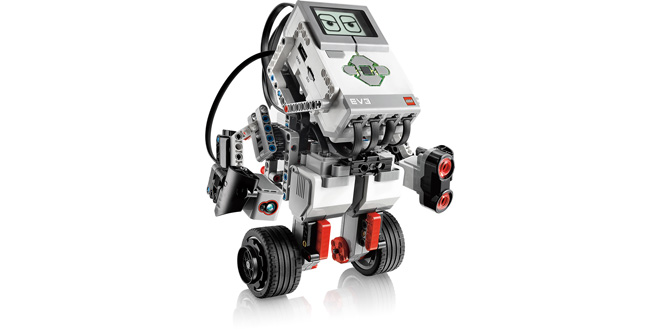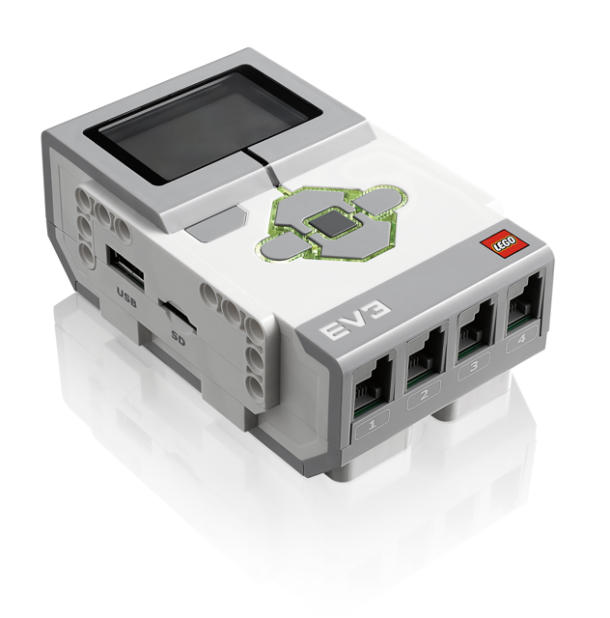
Most may remember Lego as the ultimate toy to foster creativity, but with this new generation of the iconic building blocks, kids (and kids at heart) can soon learn how to program their freshly built sculptures at a more intimate level than ever. Introducing the Lego Mindstorms EV3 – a programmable, modular robot that you can shapeshift into 17 different structures, such as a snake, army tank, elephant, and scorpion.
The technology that sits within these tiny blocks is truly impressive: The new center “Intelligent Brick” is the heart of the device to help direct the complete robot know where and how far to move. The brick is equipped with an ARM 9 300 MHz processor with 16MB of internal memory and 64 MB of RAM; if that’s not enough, you can also expand up to 32GB with a mini SDHC card and daisy chain the blocks with USB 2.0. When pieced together, the bricks read each others’ sensors to recognize its programmed actions as a whole. Up to four Intelligent Bricks can daisy chain to perform larger, functions – like, say, a four-armed, movable robot.
The EV3 also has improved hardware, such as color recognition sensors, Wi-Fi, Bluetooth dongles, and an infrared sensor to detect objects and colors, meaning more commands associated with shapes, sizes, and colors. The completely programmed robot can then react according to its surroundings, resulting in users’ abilities to program even more complex actions.
Previous versions of the Lego Mindstorms required users to program their robots from a computer before porting the actions. With the ability to program the Lego individually within each block, the EV3 can help users learn the basics of programming at a deeper level – all without needing a computer to jumpstart the program. Additionally, if a problem arises, users can attempt to reconfigure directly from each brick instead of going back on the computer to reprogram without knowing where the core of the issue is.
The Mindstorms EV3 is essentially more of a learning tool than a toy, and it’s an exciting development to what’s already one of the best pastime items on the market. Users are also encouraged to experiment with the EV3 and upload their own programs and design blueprints on the Mindstorms community website. It’s certainly the kind of tool we never had in our Robotics Club back in high school.
The Lego Mindstorms EV3 will be available in the second half of 2013 starting at $350.







